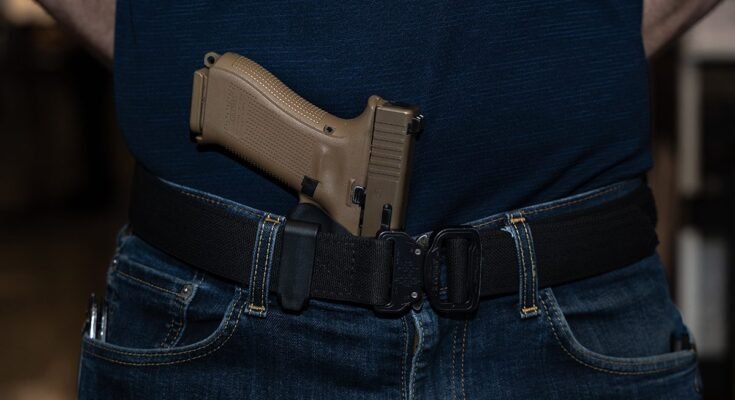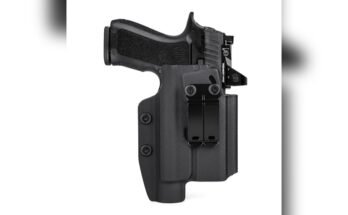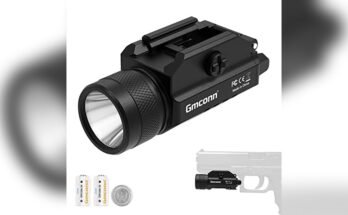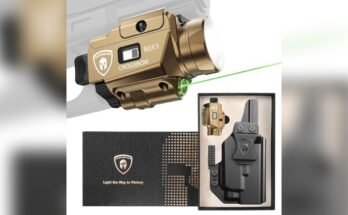I’ve spent years carrying daily, testing holsters, and coaching friends through the learning curve. How to conceal a holster under clothing? It comes down to smart gear, good fit, and safe habits. In this guide, I’ll share clear steps, real examples, and research-backed tips to help you carry legally, safely, and discreetly—without drawing attention or sacrificing comfort. You’ll learn what works for different body types, seasons, and outfits, plus how to avoid the classic mistakes I made early on.
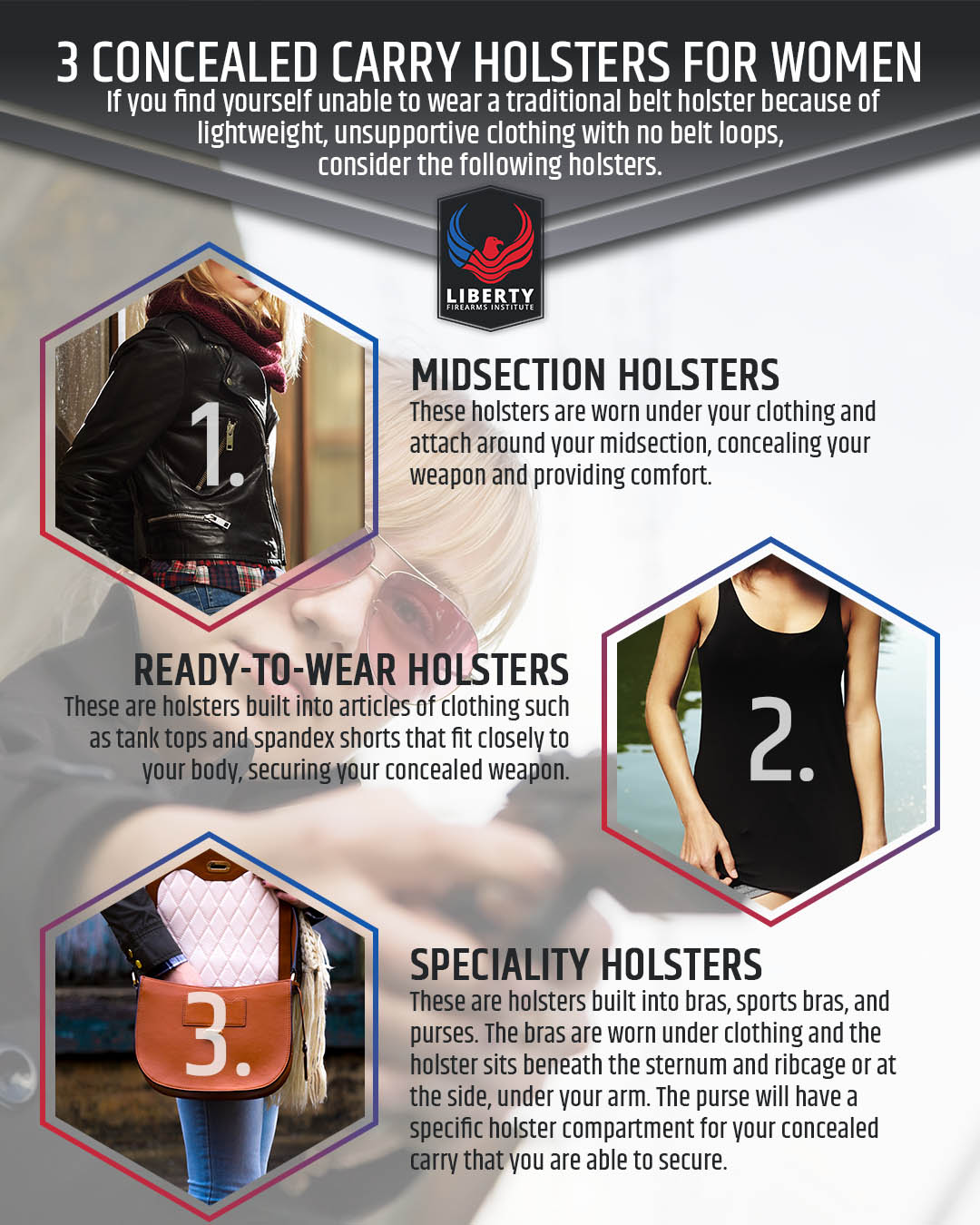
Source: www.libertyrange.com
Safety, Legality, And Mindset
Carrying concealed is about responsibility first. Know your local laws, permit rules, and where carry is restricted. Keep the firearm secure, covered, and under your control at all times. Avoid any advice that aims to bypass lawful screening or security. The goal is simple: stay safe, act within the law, and never compromise trigger protection or retention.
Adopt a calm, low-profile mindset. No clothing fidgeting. No gear showing. De-escalate when possible. Keep your circle small. Let your gear and training do the quiet work.

Source: www.blackhawk.com
Choose The Right Holster
The holster is the foundation. Look for these essentials:
– Solid trigger coverage. The trigger guard must be fully covered and rigid.
– Firm retention. You should feel a positive click or consistent hold.
– Comfortable shell. Kydex offers shape and retention. Hybrid holsters add comfort.
– Proper ride height and cant. Fine-tuning helps hide the grip and speed the draw.
– Sweat guard. Helps protect skin and the slide from moisture.
Real-life note: I switched from a soft, floppy holster to a molded Kydex IWB and my printing dropped a lot. I also felt safer, thanks to better trigger coverage.
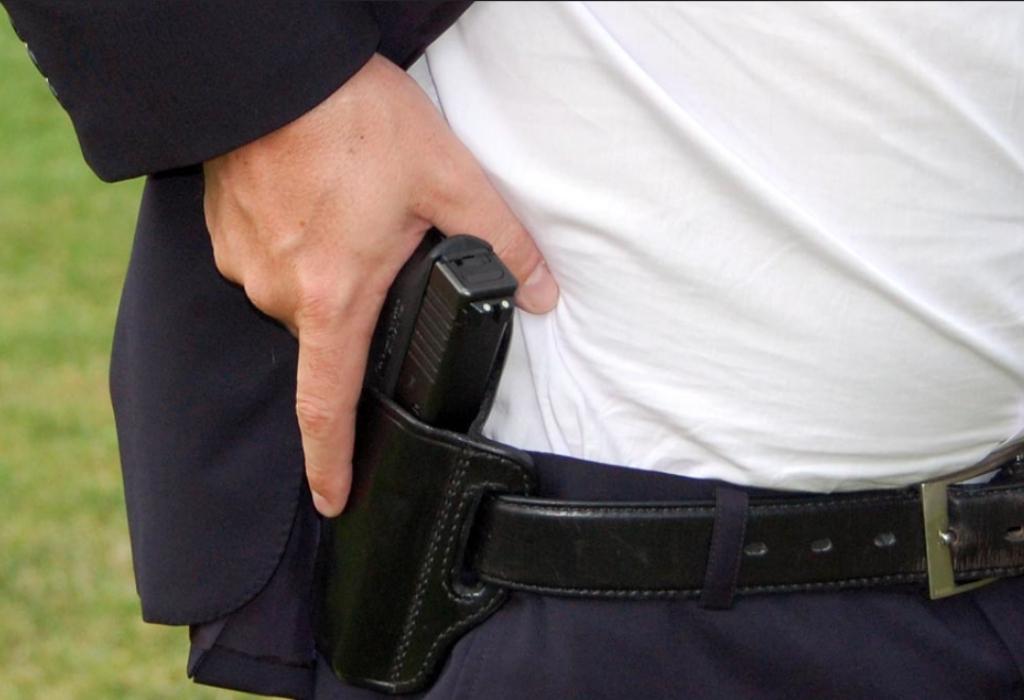
Source: www.realmenrealstyle.com
Pick A Carry Position That Fits Your Body
Your build and daily movement decide what hides best. Test at home with an unloaded firearm and safe handling rules.
Popular positions:
- Appendix carry (AIWB). Front of the waistband. Very concealable with a claw/wing. Great for smaller guns.
- Strong-side IWB (3–4 o’clock). Comfortable seated. Works well with compact and subcompact pistols.
- Behind-the-hip IWB (4–5 o’clock). Good concealment under jackets. Watch for printing when bending.
- Pocket carry. Works for very small guns with a pocket holster. Keep that pocket dedicated.
- Ankle carry. Niche role, slower draw, often for backup guns.
Tip: Add a concealment claw or wedge to push the grip into your body. A small tweak can fix big printing problems.

Source: www.ebay.com
Clothing Strategies That Reduce Printing
Clothing is the cover garment. Small changes matter more than brand names.
Easy wins:
- Choose structured fabrics. Slightly thicker shirts, textured weaves, and patterned prints break up outlines.
- Size with purpose. One size up often hides better without looking sloppy.
- Pick shirt cuts that drape. Athletic or relaxed fits help. Avoid clingy stretch fabrics.
- Layer smart. An open overshirt, hoodie, or light jacket is a concealment cheat code.
- Mind the hem length. A longer hem reduces exposure when you reach up.
What I learned: A simple switch from a tight tee to a relaxed henley solved my appendix printing. A patterned button-down covers almost anything.
Belts And Support Gear
A sturdy gun belt is non-negotiable. It distributes weight, keeps the holster stable, and reduces printing.
Look for:
- Stiff core or reinforced webbing. Prevents sagging.
- Consistent adjustability. Ratchet or micro-adjust belts help dial in comfort.
- Low-profile buckles. Less bulk, easier concealment.
Extras that help:
- Holster claw or wing. Presses the grip inward.
- Foam wedge. Tilts the muzzle out, bringing the grip in.
- Tuckable clips. For dress shirts tucked in. Plan your belt line carefully.
Match Gun Size To Your Wardrobe
Your outfit sets limits. A subcompact or slim single-stack hides under light summer clothes. Larger compacts or full-size pistols need more structure.
Practical pairing:
- Summer: short, lightweight cover garments and micro or subcompact guns.
- Fall and winter: jackets hide larger guns and spare magazines with ease.
- Business attire: slim AIWB with tuckable clips or pocket carry for very small guns.
I rotate between a slim 9mm in summer and a compact in winter. The belt and holster stay the same. The cover garment changes the game.
Move, Sit, And Bend Without Printing
How you move can flash your gear. Test daily motions to spot weak points.
Do these checks:
- Sit and stand from a chair. Adjust ride height if the grip prints.
- Reach and twist. Ensure the shirt hem stays put.
- Walk, jog, and get in a car. Comfort and concealment must both work.
Habit tips:
- Use a discreet “shirt sweep” before sitting.
- Keep hands off your belt line in public.
- If you re-adjust, do it privately, not in a checkout line.
Train For A Safe, Smooth Draw
Good concealment is useless without a safe draw. Training reduces risk and builds confidence.
Simple plan:
- Dry practice first. Unload, double-check, then practice from concealment.
- Clear the cover garment. Use a firm sweep with your support hand.
- Grip high and drive straight out. Keep the muzzle off your body.
- Re-holster slowly and deliberately. Look the gun into the holster.
Range work and reputable classes improve skills fast. Many instructors stress safety, retention, and lawful use. That expert input is worth it.
Comfort, Hot Spots, And Holster Hygiene
Small discomforts become big problems over a full day. Fix them early.
What to try:
- Adjust ride height and cant in small steps.
- Add a foam wedge or change clip position.
- Use moisture-wicking undershirts to reduce sweat and chafing.
- Clean your holster weekly. Remove lint and debris. Check screws and Loctite if needed.
Lesson learned: A five-minute screw check saved me from a loose clip on a long road trip.
Common Mistakes To Avoid
These errors cause most concealment issues:
– Using a flimsy belt. Leads to sagging and printing.
– Holster with poor retention. Unsafe and inconsistent.
– Carrying a too-large gun for the outfit. Dress around the gun or downsize.
– Constantly touching or adjusting. It draws eyes.
– Ignoring the law. Always verify local rules and restricted locations.
Fix one variable at a time. Small changes add up.
Budget Tips And Smart Upgrades
You don’t need the most expensive gear. You need the right gear that fits.
Save and spend wisely:
- Spend on the belt first. It improves every holster you own.
- Buy a known, reputable holster model for your exact firearm.
- Add a claw or wedge before switching holsters.
- Track what works in a simple carry log. Keep what you use. Sell what you don’t.
Invest in training when you can. Skills outlast gear trends.
Frequently Asked Questions Of How To Conceal A Holster Under Clothing?
Do I Need A Special Belt For Concealed Carry?
Yes. A stiff, purpose-built gun belt keeps the holster stable and reduces printing. It also improves comfort over long days.
What Carry Position Hides Best For Most People?
Appendix carry and strong-side IWB are the most common. Body type and clothing decide the winner. Try both at home and check for printing while moving.
How Do I Avoid Printing In Hot Weather?
Use a slim gun, a breathable undershirt, and a light outer layer like an open short-sleeve button-down. Patterns and textures help hide outlines.
Is Pocket Carry Safe?
Yes, if you use a real pocket holster that covers the trigger and keeps the gun upright. Keep that pocket free of keys or other items.
Can I Tuck In My Shirt And Still Conceal?
Yes. Use a tuckable IWB holster with discreet clips. Tuck the shirt between the clips and the holster body. Practice your shirt sweep for a clean draw.
How Tight Should Holster Retention Be?
Tight enough to hold the firearm during normal movement, but loose enough for a clean draw. You should feel a consistent release without jerks.
What If I’m New To Carrying And Feel Self-Conscious?
That’s normal. Most people don’t notice. Build confidence by testing at home, wearing for short outings, and avoiding constant adjustments.
Wrap-Up And Next Steps
Concealing a holster under clothing is a mix of smart gear, good fit, and steady habits. Start with a solid belt and a holster that covers the trigger and holds tight. Match gun size to your wardrobe. Use layers and structured fabrics to reduce printing. Practice safe, smooth draws and keep your mindset calm and lawful.
Take action this week. Dial in your holster ride height, swap to a sturdier belt, and test your outfits with a mirror check routine. If you want more, explore training, compare holsters side by side, or ask questions in the comments. Your comfort and confidence will grow with each small win.
Watch This Video on How to conceal a holster under clothing?
